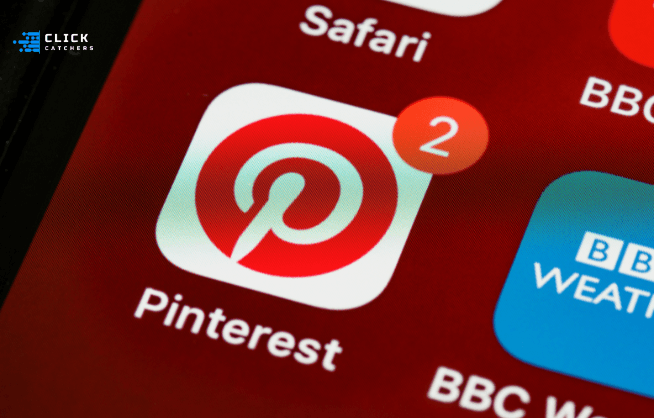Introduction
Affiliate marketing has transformed the way businesses and individuals monetize online content. Among various platforms, Pinterest stands out as a high-converting traffic source that many affiliates overlook. With over 450 million monthly active users, Pinterest operates as a visual search engine rather than just a social media platform. Users actively search for inspiration, solutions, and products, making it an ideal place for affiliate marketers to generate passive income.
For brands and marketers looking to leverage Pinterest for affiliate marketing, understanding the right strategies can turn simple pins into profit-generating assets. Here’s a comprehensive guide on how to drive traffic and increase conversions using Pinterest.

Why Pinterest is Ideal for Affiliate Marketing
Unlike traditional social media platforms, Pinterest functions as a discovery engine where users search for ideas rather than engaging in conversations. This means that Pinterest content has a longer lifespan compared to posts on Instagram, Facebook, or Twitter. While a tweet may last a few minutes and an Instagram post a few hours, a well-optimized pin can drive traffic for months or even years.
Moreover, Pinterest’s audience is highly intent-driven. Many users browse the platform specifically looking for DIY guides, product recommendations, and inspiration, which makes them more likely to click on affiliate links and make purchases.
Setting Up Your Pinterest for Affiliate Marketing
To maximize success with affiliate marketing on Pinterest, setting up a business account is the first step. A Pinterest Business Account unlocks analytics, pin scheduling, and advertising tools, offering insights that help optimize content strategy.
1. Convert to a Business Account
A business account provides access to Pinterest Analytics and rich pins, both crucial for tracking performance and increasing engagement.
2. Optimize Your Profile
• Use a clear and engaging profile picture (preferably a logo or personal brand photo).
• Write a keyword-rich bio that highlights your niche and expertise.
• Add a link to your website or blog to direct traffic to your main affiliate platform.
3. Enable Rich Pins
Rich Pins automatically pull metadata from your website, making your pins more informative and increasing credibility. This is especially useful for product-based affiliate marketing.

Creating High-Converting Pins for Affiliate Links
Pinterest is a visual platform, and high-quality pins determine whether users engage with your content or scroll past it. A well-designed pin increases visibility and click-through rates, leading to higher conversions.
Designing Click-Worthy Pins
• Use Vertical Images – The optimal pin size is 1000 x 1500 pixels for better visibility.
• Bold & Readable Text Overlay – Since many users browse on mobile devices, large, easy-to-read text improves engagement.
• Branding Elements – Add a logo or website URL to increase recognition and credibility.
• Consistent Aesthetic – Stick to a cohesive brand style with colors and fonts that reflect your niche.
Writing Engaging Pin Descriptions
An optimized description improves Pinterest SEO, increasing the chances of your pin appearing in search results. Incorporate relevant keywords naturally while making the description informative and engaging.
For example, instead of saying:
“This is a great product for weight loss.”
Use:
“Looking for a proven way to lose weight? This expert-recommended product has helped thousands achieve their fitness goals! Click to learn more.”
Driving Traffic to Your Affiliate Links
Since Pinterest does not allow direct affiliate links in all cases, the best strategy is to create blog posts or landing pagesthat include affiliate products.
Creating Value-Driven Blog Content
Instead of just linking to a product, write an in-depth blog post about it. Examples include:
• “Best Running Shoes for Beginners – Top Picks & Reviews”
• “10 Must-Have Kitchen Gadgets That Save Time”
• “How to Make Money Online Using These Digital Tools”
By embedding your affiliate links naturally in useful content, readers are more likely to trust your recommendations and make a purchase.
Using Pinterest Boards Strategically
Organizing pins into niche-specific boards improves engagement. Instead of a generic board like “Fitness Tips,” create multiple targeted boards such as:
• Best Running Shoes & Gear
• Weight Loss Tips & Diet Plans
• Home Workout Essentials
Each board should have relevant, keyword-optimized descriptions to improve Pinterest’s ranking algorithm.

Leveraging Pinterest SEO for Maximum Reach
Just like Google, Pinterest uses SEO algorithms to rank content in search results. Understanding how to optimize pins for Pinterest SEO is key to driving organic traffic.
Keyword Research for Pinterest
Use Pinterest’s search bar to find trending keywords related to your niche. Type in a broad keyword (e.g., “Affiliate Marketing Tips”) and look at the suggested auto-complete results for high-traffic keyword ideas.
Where to Use Keywords on Pinterest
• Pin Titles – Example: “Best Home Office Gadgets for Remote Work – Must-Have Products!”
• Pin Descriptions – Naturally integrate long-tail keywords to boost discoverability.
• Board Names & Descriptions – Name boards strategically (e.g., “Top Digital Tools for Online Entrepreneurs”) rather than generic titles like “Stuff I Like”.
Scaling Affiliate Marketing with Pinterest Ads
Once organic traffic starts generating conversions, using Pinterest Ads can further scale affiliate marketing success. Promoted Pins allow marketers to reach a wider audience by targeting users based on interests, behaviors, and keywords.
Key benefits of Pinterest Ads for Affiliate Marketing:
• Highly targeted audience – Ads reach users actively searching for related content.
• Cost-effective – Compared to other platforms, Pinterest ads have a lower cost-per-click (CPC).
• Longer ad lifespan – Unlike Instagram or Facebook ads, promoted pins continue generating traffic even after the campaign ends.
Pro Tip: Test multiple pin designs and ad copy variations to identify the most effective approach for maximizing ROI.

Conclusion
Affiliate marketing on Pinterest is not about quick wins—it requires consistency, optimization, and strategic scaling. Successful marketers continuously test different pin designs, keywords, and content strategies to refine what works best for their audience.
Those who leverage SEO-driven pin descriptions, create high-quality content, and engage with their audience will see a steady increase in traffic and conversions. When combined with Pinterest Ads, affiliate marketing efforts can scale significantly, leading to sustainable revenue growth.
For those serious about maximizing affiliate income, Pinterest remains one of the most underrated yet powerful platforms. By applying these expert strategies, marketers can build a profitable, evergreen traffic source that keeps generating revenue for years to come.

